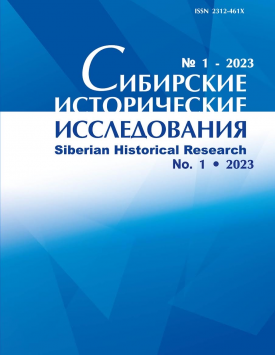The Umbrella Terms for Supernatural Entities Used by Eminent Japanese Folklorists and Anthropologists
This article deals with the question of the choice of umbrella terms for folklore characters (yokai, bakemono, obake, henge etc.) used by eminent Japanese anthropologists in their essential works. Each and every one of them - Inoue Enryo, Ema Tsutomu, Yanagita Kunio, Komatsu Kazuhiko - tried to create a paradigm in the field of lower mythology, and there were a lot of factors that impacted their choice: the folklorists' understanding of ‘popular' terms in folk culture; contradictions between different scientific approaches; chosen methodology; the social and political situation. The main analysis addressed the evolution of these umbrella terms in Japanese anthropology and folk studies, their appearance and changing meanings, and their manifested and actual interpretations in researchers' texts.
Keywords
yokai,
bakemono,
obake,
henge,
onigami,
yurei,
Inoue Enryo,
Yanagita Kunio,
Komatsu Kazuhiko,
lower mythologyAuthors
| Trynkina Daria A. | Institute of Ethnology and Anthropology, Russian Academy of Sciences | uwwalo@iea.ras.ru |
Всего: 1
References
Иноуэ Э. Полное собрание работ Иноуэ Энрё о ё:кайгаку (Иноуэ Энрё ё:кайгаку дзэнсю:). Т. 6. Токио, 2001. URL: https://www.aozora.gr.jp/cards/001021/files/49269_50168.html (на яп. яз.) (дата обращения: 07.01.2023).
Комацу К. Новое исследование в "науке о ё:кай": взгляд на душу японцев через ё:кай (Ё:кайгаку синко: ё:кай кара миру нихондзин-но кокоро). Токио: Сёгакукан, 1994. (на яп. яз.).
Комацу К. Введение в культуру ё:кай (Ё:кай бунка ню:мон). Токио: Сэрика Сёбо, 2006. (на яп. яз.).
Эма Ц. История ё:кай и хэнгэ Японии (Нихон ё:кай хэнгэ си). Токио: Тюокоронсинся, 2004. С. 13. (на яп. яз.).
Янагита К. Дискуссия о ё:кай (Ё:кай данги). Токио: Кадокава, 2013. (на яп. яз.).
Янагита К. Одноглазый монашек и так далее (Хитоцумэ кодзо: соно хока). Токио: Оямасятэн, 1934. URL: https://dl.ndl.go.jp/info:ndljp/pid/1444010/18 (на яп. яз.) (дата обращения: 07.01.2023).
Komatsu K.Introduction to Yokai Culture: Monsters, Ghosts, and Outsiders in Japanese History. Translated by Yoda Hiroko and Matt Alt. Tokyo: JPIC, 2017.
Кидзин/онигами // Нихонкокугодайдзитэн. 2001. URL: https://kotobank.jp/word/%E9% AC%BC%E7%A5%9E-50543#E7.B2.BE.E9.81.B8.E7.89.88.20.E6.97.A5.E6.9C.AC.E5. 9B.BD.E8.AA.9E.E5.A4.A7.E8.BE.9E.E5.85.B8 (на яп. яз.) (дата обращения: 07.01.2023).
Миура С. "Наука о ёкай" Иноуэ Энрё (Иноуэ Энрё-но ё: кайгаку) // International Inoue Enryo Research. 2014. Is. 2. P. 285-311. (на яп. яз.).
Хэнгэ // Нихонкокугодайдзитэн. 2001. URL: https://kotobank.jp/word/%E5%A4%89%E5%8C%96-131068 (на яп. яз.) (дата обращения: 07.01.2023).
Мещеряков А. Н. Этнолог Янагита Кунио: долгий путь к признанию // Ежегодник Япония. 2017. № 46. С. 223-245.
Никишенков А.А. История британской социальной антропологии. СПб., 2008.
Тайлор Э.Б. Первобытная культура. М., 1989.
Figal G. Civilization and Monsters: Spirits of Modernity in Meiji Japan. Durham: Duke University Press, 2007.
Foster M.D. The Book of Yokai: Mysterious Creatures of Japanese Folklore. Oakland: University of California Press, 2015.
Miura S. Inoue Enryo's Mystery Studies // International Inoue Enryo Research. 2014. Is. 2. P. 119-154.
Tokuda K. The Conquest of Yokai, Fairies and Monsters. Prologue: Heteromorphs in the East and West // The Gakushuin Journal of International Studies. 2018. Vol. 5. P. 1-36.

